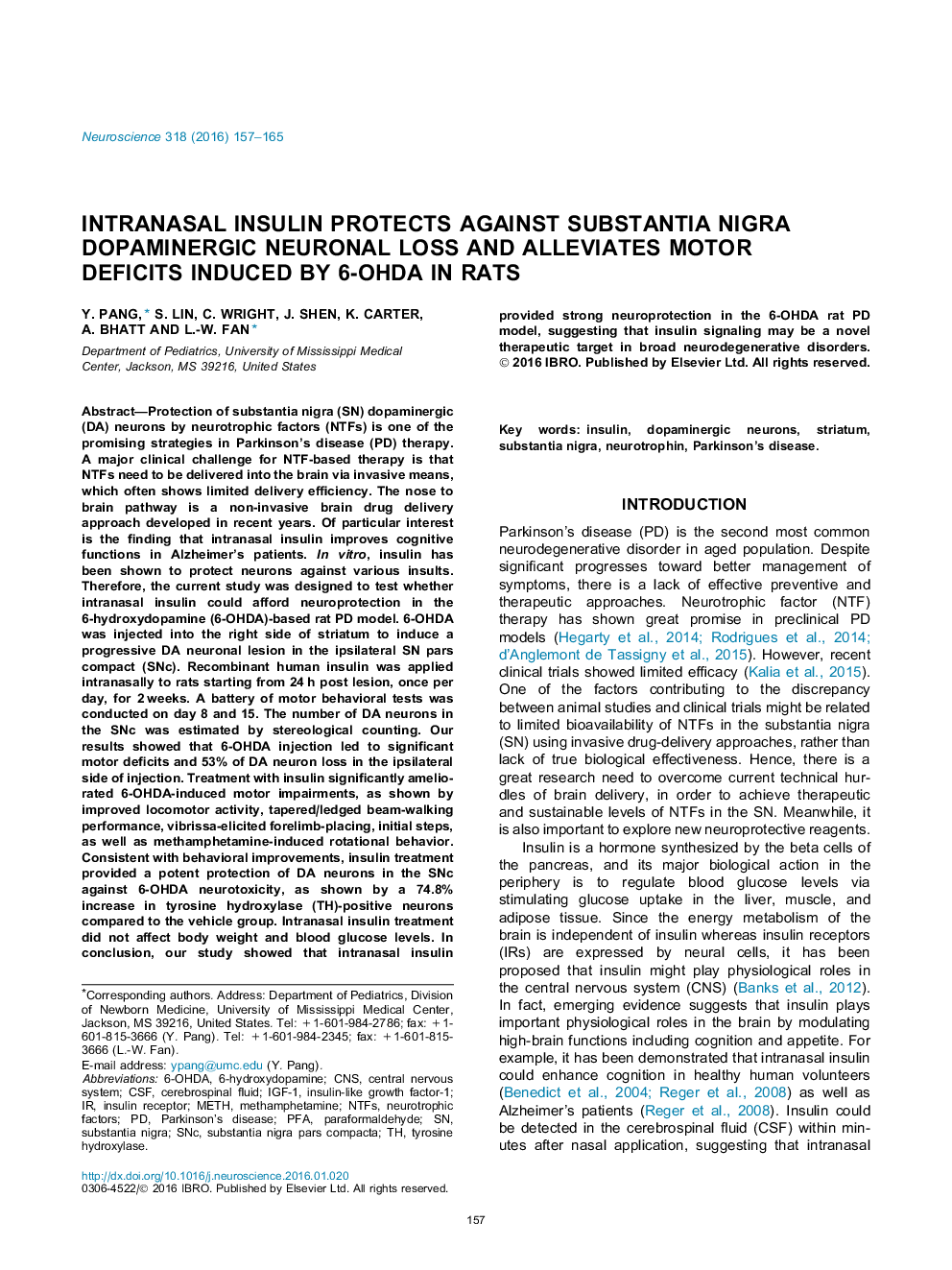| کد مقاله | کد نشریه | سال انتشار | مقاله انگلیسی | نسخه تمام متن |
|---|---|---|---|---|
| 4337382 | 1614758 | 2016 | 9 صفحه PDF | دانلود رایگان |

• Intranasal insulin treatment significantly ameliorated 6-OHDA-induced sensorimotor dysfunction in rats.
• Intranasal insulin treatment significantly reduced methamphetamine-induced rotation in 6-OHDA-lesion rats.
• Intranasal insulin treatment significantly increased DA neuron survival in the SN in 6-OHDA-lesion rats.
• Intranasal insulin treatment did not cause hypoglycemia in rats.
Protection of substantia nigra (SN) dopaminergic (DA) neurons by neurotrophic factors (NTFs) is one of the promising strategies in Parkinson’s disease (PD) therapy. A major clinical challenge for NTF-based therapy is that NTFs need to be delivered into the brain via invasive means, which often shows limited delivery efficiency. The nose to brain pathway is a non-invasive brain drug delivery approach developed in recent years. Of particular interest is the finding that intranasal insulin improves cognitive functions in Alzheimer’s patients. In vitro, insulin has been shown to protect neurons against various insults. Therefore, the current study was designed to test whether intranasal insulin could afford neuroprotection in the 6-hydroxydopamine (6-OHDA)-based rat PD model. 6-OHDA was injected into the right side of striatum to induce a progressive DA neuronal lesion in the ipsilateral SN pars compact (SNc). Recombinant human insulin was applied intranasally to rats starting from 24 h post lesion, once per day, for 2 weeks. A battery of motor behavioral tests was conducted on day 8 and 15. The number of DA neurons in the SNc was estimated by stereological counting. Our results showed that 6-OHDA injection led to significant motor deficits and 53% of DA neuron loss in the ipsilateral side of injection. Treatment with insulin significantly ameliorated 6-OHDA-induced motor impairments, as shown by improved locomotor activity, tapered/ledged beam-walking performance, vibrissa-elicited forelimb-placing, initial steps, as well as methamphetamine-induced rotational behavior. Consistent with behavioral improvements, insulin treatment provided a potent protection of DA neurons in the SNc against 6-OHDA neurotoxicity, as shown by a 74.8% increase in tyrosine hydroxylase (TH)-positive neurons compared to the vehicle group. Intranasal insulin treatment did not affect body weight and blood glucose levels. In conclusion, our study showed that intranasal insulin provided strong neuroprotection in the 6-OHDA rat PD model, suggesting that insulin signaling may be a novel therapeutic target in broad neurodegenerative disorders.
Journal: Neuroscience - Volume 318, 24 March 2016, Pages 157–165